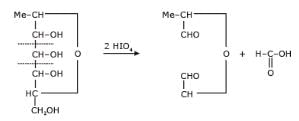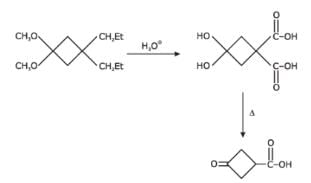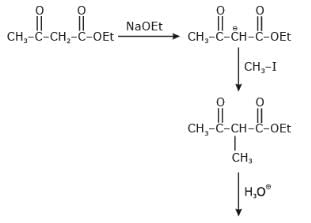Test: Alcohols, Phenols & Ethers - 2 - NEET MCQ
30 Questions MCQ Test NCERT Based Tests for NEET - Test: Alcohols, Phenols & Ethers - 2
The structure of the product formed in the reaction given below is -
, Products obtained in the above reaction are -
+ 4HIO4 →, Products, Find the product so obtained?
Which of the following compound gives 2HCHO, CO2, 2HCO2H when oxidisized by periodic acid
An ether is more volatile than an alcohol having the same molecular formula. This is due to
In the given reaction :
CH3_ (a) + (b)
(a) and (b) respectively be -
R––O–H+R1–OH
R–
–O–R,
In above esterification reaction rate of reactin is maximum, when R1–OH is -
Which of the following is the least soluble in water?
Which of the following compound reduces by DIBAL-H ?
Which of the following compound reduces by NaBH4 ?
Which of the following compounds not reacts with NaOH ?
EtOH+ →
→
In above reaction molecular weight of alcohol increases by
x & y are moles of HIO4 consumed is above reaction.
(i) Value of x inabove reaction is -
Which of the following ethers cannot be prepared by Williamson’s synthesis?
x & y are moles of HIO4 consumed is above reaction.
Sum of x + y is -
x & y are moles of HIO4 consumed is above reaction.
Mole of HCHO formed in (A) is -
|
684 tests
|














 +CH3–O18H
+CH3–O18H 










